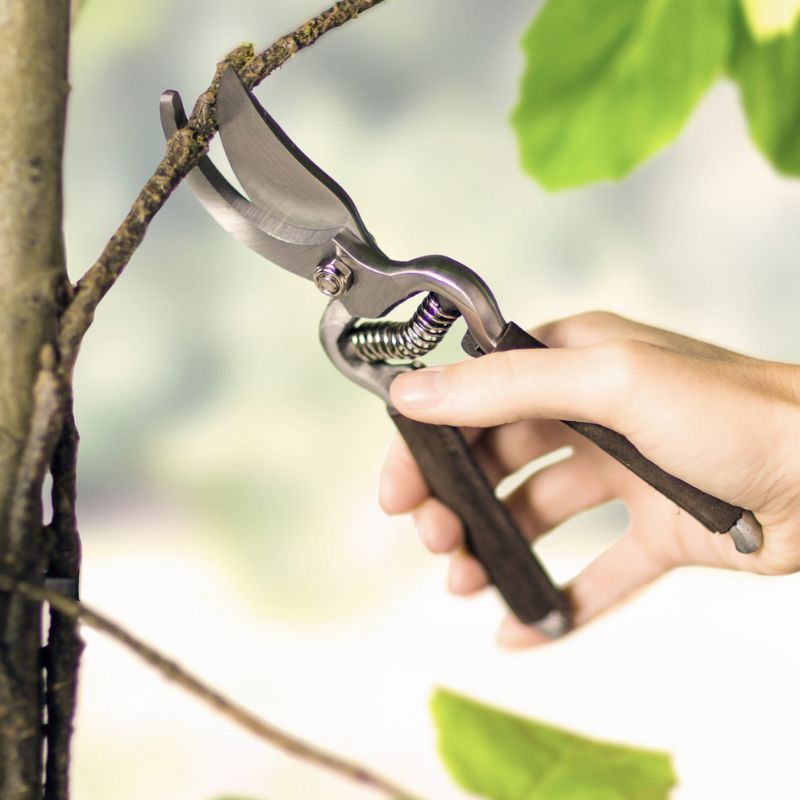Can I plant wildflower seeds in an existing lawn?
Sowing wildflowers into existing grass
Welcome to another part of a series where I answer common questions posed by people trying to make the best wildflower meadows they can.
In this post I will look at how to sow into existing lawns or grassy areas and how they may be prepared.
I threw my wildflower seed into my lawn, but nothing happened, why?
Wildflowers can live quite happily alongside grass species in the wild but getting to this stage is a long and difficult process of domination and competition.
If you sprinkle wildflower seed into an established lawn, they will already be at a disadvantage before they even hit the ground. This is because the grass is already the dominating species in what is known as a ‘monoculture’. While some perennial species from the seed may eventually establish themselves, annual species have pretty much no chance at all.
Without preparation, sprinkling wildflower seed into an established lawn or grassland will be a waste of seed. While it is possible to sow into established grass, it is a bit more challenging to get wildflowers established than if sown in a clean seedbed.
First you must remember that the main competitor to the wildflower seedlings will be the existing grass. Grass grows quite quickly in the right conditions, and it can easily overwhelm seedlings in their critical early weeks of growth. It is not as dependant on warm weather or light for growth as other plants may be. This gives it a distinct advantage during periods of cold, wet, and dull conditions.
How to establish wildflowers in an existing lawn?
So, the first thing to do will be to set back or damage the grass as much as possible, both above ground and below.
Before any sowing, cut the grass down as low to the soil as possible. Use a lawnmower on its lowest setting and use the bag attachment to take away the cuttings. If using a strimmer, you may be able to cut right down to the soil level.
Next, rake the soil hard to expose loose soil and damage the grass root systems. This is heavy work, so a scarifier (for lawns) or a chain harrow (for large areas and fields) may be your best option.
The aim is to expose at least 50% loose soil, but 70-80% is preferable. The area may look a little rough and ready for a few weeks, but it will set back the grass enough to allow wildflower seedlings the best chance to get established.
Once you have the area prepared, broadcast your seed across the seedbed. Then rake or use a light garden roller to ensure that the seed has good seed-to-soil contact.
If the weather is dry, then give the whole area a good watering – this may not be possible on larger areas, so you’ll just have to wait for the rain (not usually a problem here in Ireland).
For the first few weeks, cut the grass to the height of the highest setting on a lawnmower once every two weeks. This will help to keep the grass low and allow light to the soil to help start germination. Once the seedlings start to emerge, be careful with your mowing to prevent topping the growing tips off them.
Once the seedlings reach the height of the grass, stop the mowing and let the meadow grow for the summer.
In the Autumn, cut the meadow back to a height of 2-3 inches and take away all the cuttings. Then leave the meadow uncut for the winter.
As there is going to be a lot of grass growing back by the end of the Summer, introduce Yellow Rattle to the area in the Autumn. This will help to control the grass in the years to come by limiting its growth and thinning it out.
One last thing
As noted, creating a meadow by sowing into grass is challenging at best.
However, if your area is dominated by Couch grass or perennial rye grass, then the chances of success are much reduced – these two species of grasses are very aggressive, and it will be hard for most wildflowers to compete against them.
Conclusion
My recommendation is always to sow onto a clean seedbed to create a long lasting, species-rich meadow. If you do decide to sow into your lawn, the more soil you can expose, the better. Ensure to plant a 100% wildflower seed mix rather than a meadow mix, and finally, sowing yellow rattle seed in autumn will be necessary.













